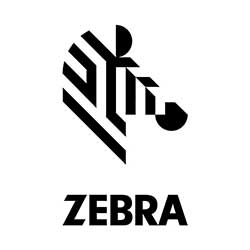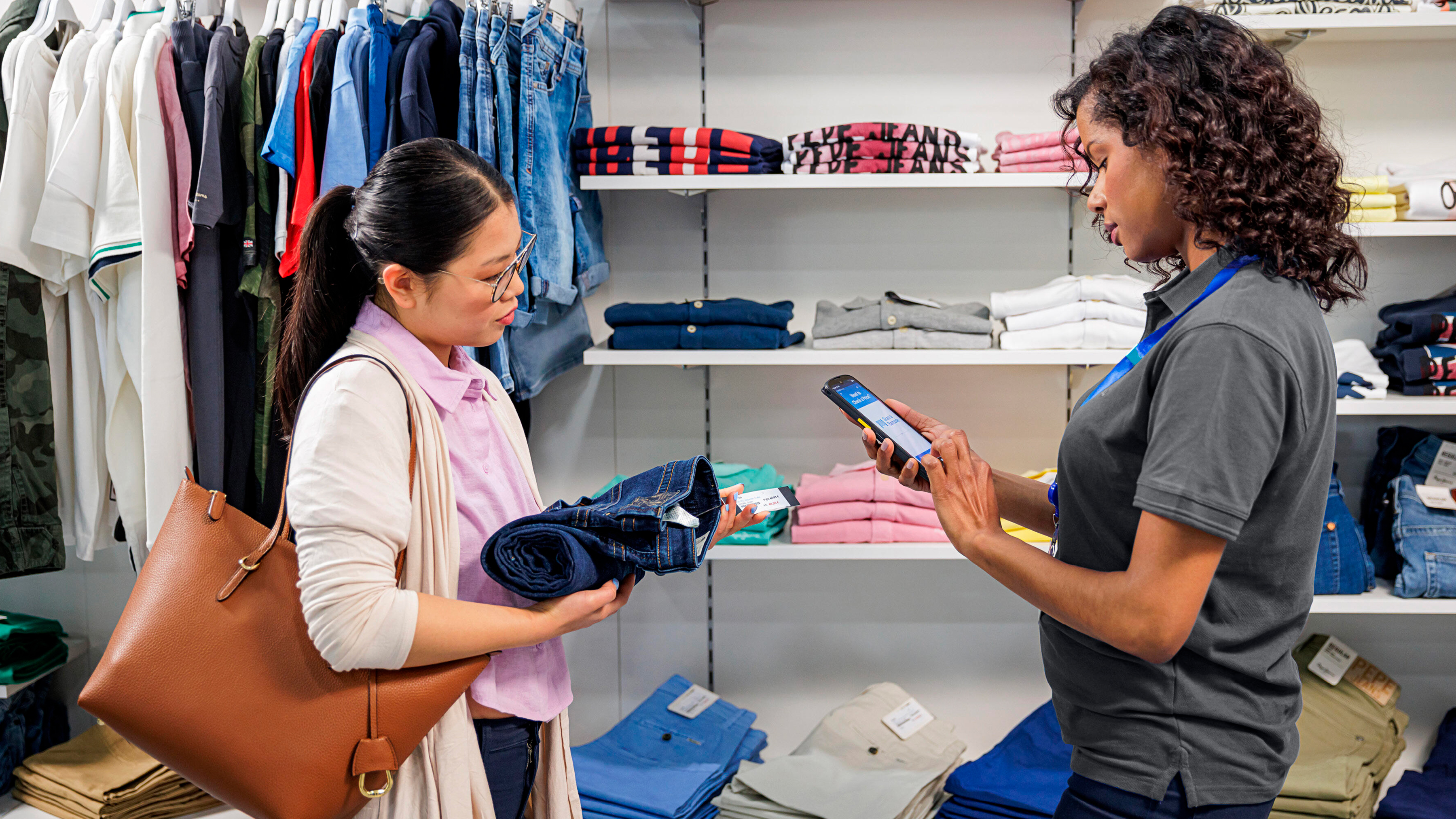If you’ve ever shopped for a rugged tablet, laptop or even a regular TV before, you’ve probably seen the term “nit” in some variation (nits, Nit, Nits, NIT, NITS, NITs, etc.) on a product webpage or spec sheet. But do you know what it means?
Many people don’t – even if they do know that it is not an insect, as a quick internet search might lead you to believe. At least not when used in reference to technology.
(To be clear: a “nit” is a term used to describe insects. But, as a rugged tablet manufacturer, I can tell you that Zebra is not claiming that a 1000 nit display can ward off 1000 insects. We measure our rugged devices’ survivability against many other environmental factors, but not bugs.)
That’s why we’ve asked rugged mobility expert Kyp Walls to help us set the record straight on this confusing, but commonly used term, in this latest installment of “Ask the Expert”. We want to give you the knowledge you need to select a tablet, 2-in-1 or handheld mobile computer with the right nit level.
Your Edge Blog Team: Let’s start with the pressing question. What is a nit?
Kyp: Well, a nit can mean a few different things. But when you hear mobile device, computer and TV manufacturers use the term “nit,” they’re talking about how bright their screens can get.
Though you can find a more technical definition on TechTarget, ComputerHope explains it simply: “a nit is a measure of light over a surface, more specifically, one nit is equal to one candela per square meter.” The more nits, the brighter the display. (Though many display manufacturers still use the more cumbersome, and harder to pronounce, cd/m2 abbreviation instead.)
Your Edge Blog Team: That makes us wonder how “nit” became a term used to describe lice.
Kyp: That’s for an entomologist to answer, but considering that the term nit is believed to be short for the Latin word nitere, to shine, it makes more sense to use “nit” to describe a measurement of brightness than in reference to an insect or its egg.
Your Edge Blog Team: Speaking of measurement, how many nits do I need to be able to view my tablet screen in bright sunlight (no matter where I may be in the world)? And, while we’re on that topic, is there a difference between a “sunlight-readable” and “daylight-viewable” display? Those two terms seem to be used interchangeably, but rumor has it they don’t actually mean the same thing.
Kyp: You’re right, the terminology that tablet, smartphone and laptop manufacturers use to describe their device displays can be inconsistent. Part of the problem is that terms like sunlight-readable, sunlight-viewable and daylight-viewable are somewhat subjective. That’s why I like to tell customers to look at a display’s nit level, preferably in person, as there’s no room for interpretation (or misinterpretation) there.
For example, at Zebra, we don’t consider a tablet display to be sunlight-readable (or viewable) unless it is at least 800 nit. That doesn’t mean that you won’t be able to see what’s on a 500 nit display outside on a sunny day. It just means that, with an 800+ nit display, the screen will always be bright enough for a worker to easily see a detailed schematic or read tiny words and numbers on an Excel spreadsheet when the mid-day summer sun is beaming directly down on them. Today, many rugged tablets intended for all-day outdoor use are equipped with 1000+ nit displays.
For example, all Zebra L10 rugged tablets, as well as the XSLATE R12® rugged tablet, come standard with anti-glare screen protection film and daylight-viewable 500 nit displays but are available with 1,000 nit ViewAnywhere™ displays that can be read in direct sunlight. Other companies may use different guidelines to define their mobile computers’ display viewing capabilities depending on their screens’ maximum nit levels and screen treatments. And given that nit ratings are a ratio (candelas PER square meter) of brightness to screen area, be aware that screen size will be a factor in how bright a screen appears.
A word of caution, though: if you see the term “outdoor” or “daylight-viewable” used to describe a tablet or smartphone, I would question what that really means. Does that mean you can view the mobile device screen outside on a cloudy day without issue? Or will you still be able to see it clearly under direct sunlight? Again, it’s always best to try the device in direct sun, even through a window, or at least very bright light, to confirm viewability potential.
Your Edge Blog Team: What about a rugged tablet that is only going to be used indoors, such as in a factory, warehouse or hospital? Do you need an 800 nit or 1000 nit display in those environments?
Kyp: Great question. The answer is no, not necessarily. Believe it or not, it is possible for a worker to say “my tablet screen is too bright”, though that usually means they just don’t know how to adjust it. In fact, when our customers ask “how bright should my tablet screen be?” – and their mobility solution will be used solely indoors and not near large windows or open doors – we may encourage them to think about screen brightness in a slightly different way. Instead of looking at a minimum nit rating, consider the overall viewability sufficiency. Ask “how bright does my tablet (or handheld mobile computer) screen really need to be given how and where it will be used? Will my workers be able to see what they need to see on a XX nit display in XX lighting if they’re typically looking at the device while [walking around, standing still, driving a forklift]?” (Vehicle mounts can be particularly challenging as it can be hard to move the screen out of direct sunlight like you could if you were merely holding it.)
Your Edge Blog Team: So, you’re recommending that customers rate a mobile device’s usability based on their pre-defined viewability range versus focusing solely on the maximum brightness setting?
Kyp: Exactly. Think about your personal smartphone, tablet or laptop usage for a second. How often do you adjust the display brightness on those devices in the course of a day? If you’re working on your laptop late at night or reading an article on your smartphone with no ambient lighting, you probably lower your screen brightness a bit. You may even switch to a night mode setting that has a dark background and white text versus the typical white background and black text setting. It’s easier on the eyes.
If you’re working outside, especially under direct sunlight, you will switch back to the white background and probably max out the brightness setting – especially if you’re using a consumer-grade device that peaks at somewhere between 200-300 nits.
These same setting adjustments will carry over to the workplace. Even though a rugged tablet may be able to go up to 1000 or 1200 nits (which is necessary for those who are stuck in direct sunlight), that may be unnecessary for workers who spend all day in a dimly-lit building or dark room. Warehouse pickers or clean room workers are possible examples. They may never need more than 300 or 400 nits.
So, if you are evaluating two different rugged tablets for use by a warehouse supervisor – one with a 500 nit display and one with a 1,000 nit display – and they are otherwise equally rugged and identically equipped from a security, safety, connectivity, input/output (I/O), handling, mounting and data input perspective, then a sales rep will likely agree that the 500 nit configuration will be more than sufficient for this indoor-only application.
One more thing to think about: there are many workers that can’t afford for their rugged tablets to be glowing in the dark, including some law enforcement officers, military personnel or even a nurse on night rounds. In these cases, having a night mode or stealth mode setting might be just as important, if not more so, than having a sunlight-viewable display.
Your Edge Blog Team: So, there are many factors that you need to consider to determine both your minimal brightness and maximum brightness requirements, whether you’re buying a mobile phone, tablet, 2-in-1 or even vehicle-mounted computer for use in a healthcare, field service, retail, enterprise or industrial environment?
Kyp: Pretty much. We always ask customers: will the devices be solely used indoors or outdoors? If indoors, is there a lot of bright artificial light, or large windows, or do you keep the lights dim? If your workers are mostly outdoors, will the devices be used only during daylight hours? Or will they be needed in the dark of night, too? And, how much do your workers transition between an office, a vehicle and the field?
Answering these questions helps us determine the screen brightness sufficiency level for each one of our customer’s indoor workers and the minimum nit requirement for workers who will be using the handheld mobile computers or rugged tablets outdoors in some capacity. Going back to the warehouse example: the 500 nit tablet may be perfect for a supervisor, even at the bay doors, but a forklift operator who is constantly transitioning between the warehouse, yard, and loading dock will likely need a tablet with a sunlight-readable display and auto-dimming capabilities.
Your Edge Blog Team: Is there anything else that someone should think about related to screen brightness when comparing mobile devices?
Kyp: One thing that may not be well-articulated on a spec sheet, or proactively offered up in a sales meeting, is the influence that screen brightness can have on a mobile device’s battery life. If your screen is maxed out on the brightest setting for hours at a time, it’s going to cause your battery to drain faster than if you had the device display dimmed that whole time. Now, if you’re working outside under direct sunlight for 8+ hours every day, you can’t avoid that. Rather, you just have to plan accordingly and either pick a device with a long-life battery or a hot-swappable battery (or both, ideally).
Your Edge Blog Team: That’s good to know. Thank you for the tip. We have one final question: what is the right way to write “nit” or “nits.” Is it all capitalized? All lowercase? NITs? Nits?
Kyp: Funny you should ask, because this is an ongoing point of debate in the industry, and even here at Zebra. I honestly don’t know the right answer. I’ve seen tech experts – reporters, analysts and our own Zebra mobility teams – write it so many different ways. Maybe we should make it a goal to standardize the term as an industry. I’d be curious to hear others’ opinions on this.
###
We want to know what you think…
What’s the right way to write “nit”? And do you agree with the nit standard we use to define sunlight-readable displays?
Leave us a comment below to share your thoughts on this subject. Feel free to also submit your questions about how to assess the suitability of different screen brightness (nit) levels for your mobile device use cases.

Zebra’s “Your Edge” Blog Team
The “Your Edge” Blog Team is comprised of content curators and editors from Zebra’s Global PR, Thought Leadership and Advocacy team. Our goal is to connect you with the industry experts best-versed on the issues, trends and solutions that impact your business. We will collectively deliver critical news analysis, exclusive insights on the state of your industry, and guidance on how your organization can leverage a number of different proven technology platforms and strategies to capture your edge.






